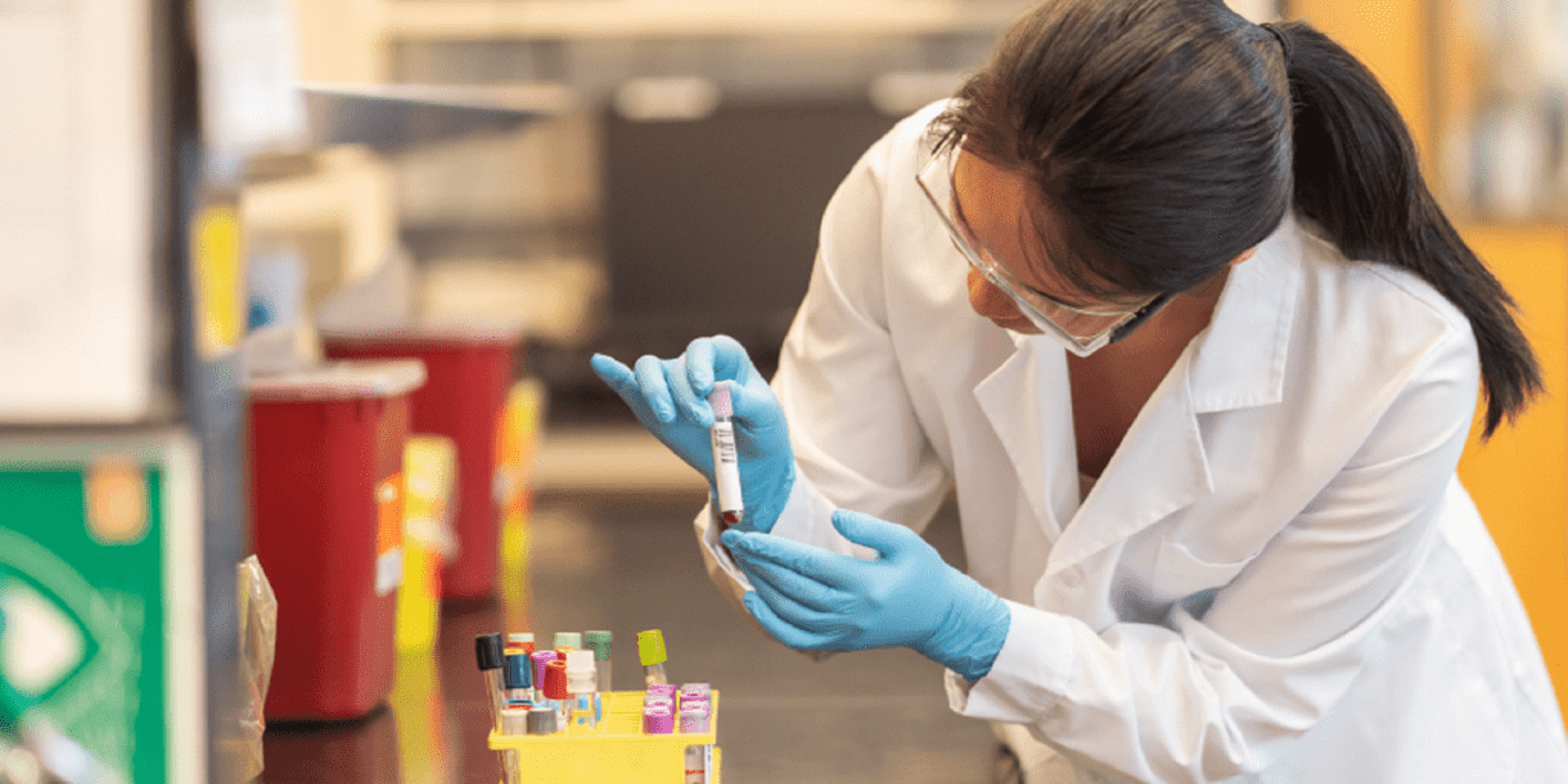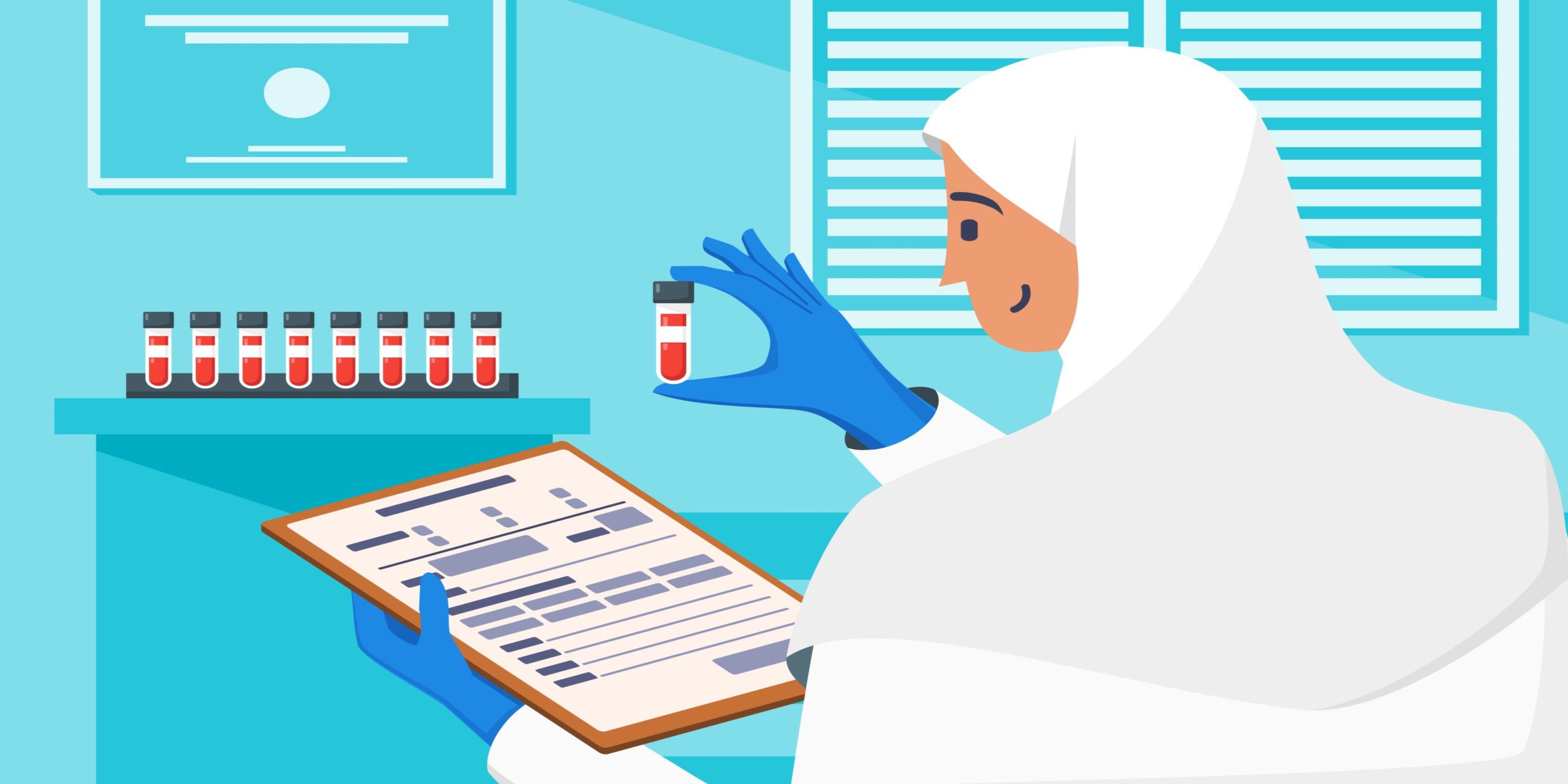Becoming a phlebotomist offers a good entry point into the UK healthcare system and can be a fulfilling career choice. According to recent statistics, 500 million biochemistry and 130 million haematology tests are conducted annually. On average, 14 tests for each person in England and Wales are performed annually. Moreover, phlebotomists play a significant role in carrying out these blood tests. They help patients by calming their nerves before drawing out blood samples. In this blog, we will cover all the necessary steps for you to become a phlebotomist.
Phlebotomy Definition
Phlebotomy is the medical practice of drawing blood from patients for various purposes, such as diagnostic testing, transfusions, or research. It involves using a needle to puncture a vein, generally in the arm. Additionally, it involves collecting and preparing blood samples for laboratory analysis. Phlebotomists are trained healthcare professionals responsible for performing this procedure safely and efficiently.

What Does a Phlebotomist Do?
Phlebotomists play a vital role in the healthcare system by assuring that blood samples are collected safely and accurately. Thus contributing to the diagnosis and treatment of various medical conditions. Here are some of the duties and responsibilities of a phlebotomist:
Venipuncture:
Venipuncture involves using a needle to puncture a vein to collect blood samples. Proper knowledge of human anatomy and sterile procedures is also needed to perform venipuncture.
Patient Interaction:
Phlebotomists interact with patients to explain the procedure and ease any concerns or fears. Moreover, they secure their comfort throughout the process.
Identifying Patients and Specimens:
Accurately labelling blood samples and confirming they are correctly matched with the corresponding patient. Thus preventing errors in testing and diagnosis.
Sample Processing:
Phlebotomists are responsible for processing blood samples before laboratory analysis. This includes separating different components of blood and preparing slides for microscopic inspection.
Maintaining Sterility and Safety:
Sticking to strict guidelines helps keep the environment sterile and prevent infection from spreading. Thus, good hand hygiene and disinfection practices are necessary.
Equipment Maintenance:
Ensuring that phlebotomy equipment, such as needles, tubes, and blood collection devices, is properly maintained, cleaned, and sterilised to guarantee their usefulness and safety.
Labelling and Record-Keeping:
After collecting blood samples, phlebotomists label them accurately. Moreover, they confirm that the samples are correctly recorded for identification and tracking purposes.
Safety and Infection Control:
Phlebotomists follow safety and infection control protocols to control the spread of diseases. This includes wearing gloves, using hygienic equipment, and disposing of used needles.
How To Become a Phlebotomist: Requirements
The phlebotomist profession is a very popular and lucrative career to pursue. The profession is also very demanding in the UK healthcare industry. Therefore, becoming a phlebotomist requires formal education, certifications, training, and experience. Here’s a breakdown of these factors:
High School Diploma or GED
A high school diploma or GED is a plus for becoming a phlebotomist. Moreover, having a good foundation in subjects like maths and science will help you deal with daily phlebotomy work. Thus, education cannot be entirely ignored when pursuing a career in this industry.
Certification
There are no specific requirements for certificates to become a phlebotomist in the UK. However, many employers prefer candidates with certifications so that they are perfectly fitted for the role. Here are some certifications:
- Level 3 Certificate in Phlebotomy
- Infection Control Certification
- Basic Life Support (BLS) Certification
- Healthcare Support Worker (HCSW) Certificate
Phlebotomy Training Course
There are many courses available on “phlebotomy training for beginners” all over the world. In fact, Unified Course offers many phlebotomy courses to help you become a skilled phlebotomist. Additionally, these courses cover topics such as:
- Anatomy
- Physiology
- Medical terminology
- Blood collection techniques
- infection control
- Patient care
Work Experience
You can gain practical experience through internships, volunteer work, or entry-level positions in healthcare settings. Moreover, seek opportunities to shadow experienced phlebotomists to increase your knowledge. Furthermore, hands-on experience is crucial for developing your skills and confidence and proving that you are prepared to enter the phlebotomy industry.

How to Become a Phlebotomist: Necessary Skills
Becoming a phlebotomist doesn’t only require education; skills are also needed. Here are the skills which you may need to become a phlebotomist:
- Attention to Detail
- Communication Skills
- Manual Dexterity
- Empathy and Compassion
- Medical Knowledge
- Commitment to Protocols
- Problem-Solving Skills
- Organisational Skills
- Professionalism
Phlebotomy Work Environment
The work environment of the phlebotomists can vary depending on various situations and places. However, some common areas where phlebotomists work are:
- Hospitals: They collect blood samples from patients in different hospital departments. Moreover, hospital settings can be fast-paced and may require phlebotomists to work flexible hours.
- Clinics and Medical Centres: Phlebotomists draw blood from patients during routine check-ups, vaccinations, or other medical procedures in clinics and medical centres.
- Diagnostic Laboratories: Some phlebotomists work in labs, collecting and processing blood samples for analysis. Additionally, their tasks include preparing slides for microscopy and centrifuging blood to separate serum or plasma.
- Blood Donation Centres: Phlebotomists collect blood donations from voluntary donors. They also ensure safety and comfort while following strict protocols to prevent contamination.
- Research Institutions: In research or clinical trial facilities, phlebotomists collect blood samples for research purposes. This involves specialised procedures like genetic testing or drug-level monitoring.
How Much Does a Phlebotomist Earn in the UK?
The salary of a phlebotomist working within the NHS is paid according to its pay scale. The pay scale varies on the NHS banding. In addition, the salary of a phlebotomist also depends on different factors, such as geographic location, experience, skills, and employer. Here are some of the job positions and their salaries:
- Phlebotomist: £18,000 – £24,000 per year
- Senior Phlebotomist: £22,000 – £28,000 per year
- Lead Phlebotomist: £25,000 – £32,000 per year
- Phlebotomy Team Leader: £28,000 – £35,000 per year
- Phlebotomy Manager: £30,000 – £40,000 per year
Conclusion
Becoming a phlebotomist opens the door to a fulfilling career in healthcare. It’s an opportunity to directly contribute to patient care by playing a crucial role in making accurate diagnoses. The path involves acquiring the necessary skills through training and certification. So, if you’re looking for a career directly impacting people’s lives, phlebotomy might just be the perfect fit. It’s a chance to make a difference, one blood draw at a time.




